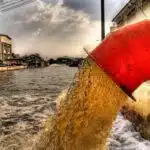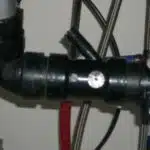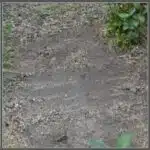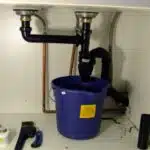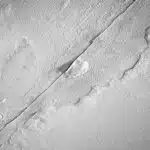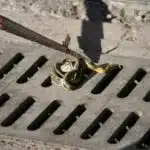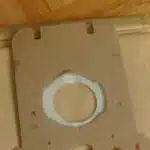As a landscape consultant, it is important to ensure that your clients’ yards are not only aesthetically pleasing but also functional. One common issue that homeowners face is standing water in their yard, which not only creates an eyesore but can also lead to potential health hazards and damage to the property. Therefore, it is essential to know how to remove standing water from your yard.
Standing water could occur due to various reasons such as poor drainage systems, excessive rainfall, or even improper grading of the land. As a result, it can become a breeding ground for mosquitoes and other insects that could carry diseases. It can also cause soil erosion and damage the foundation of buildings or structures on the property. In this article, we will discuss some effective ways to remove standing water from your yard and prevent its recurrence so that you can have a beautiful and safe outdoor living space for yourself and others.
Identifying The Cause Of Standing Water
It is plausible that standing water in your yard is caused by a number of factors. One of which could be poor soil drainage, which is when the soil is unable to absorb water efficiently due to its composition or saturation level. Another cause could be a poorly designed landscape where water cannot flow properly away from your property. It may also stem from natural occurrences such as heavy rainfall, snowmelt, or seasonal flooding.
Standing water can have detrimental effects on your lawn and plants. When left unaddressed for a prolonged period, standing water can lead to root rot in plants and eventually kill them off. Additionally, it creates an ideal breeding ground for mosquitoes and other pests that can pose health risks to you and your family. Not only that, but it can also cause damage to structures like decks and patios if they are situated in areas where there is standing water.
Assessing the severity of the problem starts with identifying the causes of standing water in your yard. By understanding what factors contribute to this issue, you’ll have a better idea of how to address it effectively. The next step would be to examine the extent of damage inflicted on your lawn and plants as well as any nearby structures that may have been affected by the pooling water.
Assessing The Severity Of The Problem
Before taking any action to remove standing water from your yard, you need to assess the severity of the problem. The first step in assessing property is to determine how long the standing water has been present and if there are any visible signs of damage. In most cases, standing water can be a sign of poor drainage or grading issues, but it can also be caused by weather conditions such as heavy rain.
A professional assessment may be necessary if the problem is severe or if there are visible signs of damage. A landscape consultant can help assess your property and provide recommendations on the best course of action. They will evaluate the overall drainage system, including gutters, downspouts, and any other areas where water may collect.
Assessing the severity of standing water in your yard is crucial to determining the appropriate steps to take to resolve this issue. A professional assessment can provide you with valuable insights into potential solutions that may not have occurred to you previously. In addition, it can save you time and money by ensuring that you approach this issue correctly from the start. Once you have a better understanding of the problem at hand, you can move on to checking for local regulations regarding standing water in your area.
Checking For Local Regulations
Assessing the severity of standing water is only the first step in solving the problem. Once you have determined that you need to remove the standing water, it is important to check for local regulations and guidelines for drainage. Did you know that over 50% of municipalities in the United States have some form of stormwater management plan? This means that before taking any action, it is crucial to ensure that you are following all necessary regulations.
To avoid any legal issues or fines, it is important to check for permits before starting any work on your yard. Depending on where you live, different permits may be required for different types of drainage systems or methods. In addition to permits, there may also be local guidelines for drainage that should be followed. These guidelines could include requirements for specific types of materials or methods used in removing standing water.
When planning your approach to removing standing water from your yard, it is important to keep these three things in mind:
- Check for necessary permits before beginning any work.
- Be aware of local guidelines for drainage and follow them accordingly.
- Consider consulting with a professional landscape consultant who can provide guidance on the best methods and materials to use based on your specific situation.
By being proactive in checking for regulations and guidelines, as well as seeking professional help if needed, you can ensure that your efforts towards removing standing water from your yard are not only effective but also compliant with all necessary rules and regulations.
Planning Your Approach
Before you start removing standing water from your yard, it’s crucial to plan your approach. The first step is to measure the moisture content of your soil. You can do this by digging a hole in your yard and checking the moisture level at different depths. This will help you determine how much drainage you need and where to place it.
The next step is to assess your soil composition. Some soils drain better than others, so it’s important to know what type of soil you have. If you have heavy clay soil, for example, it may be more difficult to remove standing water. In this case, you may need to consider installing a french drain or other drainage system.
Once you’ve measured the moisture content and assessed your soil composition, you will have a better idea of how to proceed with removing standing water from your yard. In the next section, we will discuss installing a french drain as one possible solution for addressing this issue. By taking these steps beforehand, you can ensure that your efforts are effective and efficient in achieving a dry and healthy landscape for all of your outdoor activities.
Installing A French Drain
Just as water is the source of life, it can also be the source of headaches for homeowners. Standing water in your yard can lead to a host of problems, including mosquito infestations and damage to your home’s foundation. In order to remove standing water from your yard, you need to have a proper plan in place.
One effective solution for removing standing water is the installation of a French drain. This type of drain is designed to redirect water away from your home and into a designated area where it can be absorbed or drained away. French drain installation requires careful planning and consideration, as well as an understanding of the costs involved.
To begin with, you’ll need to assess your yard’s drainage needs and determine the best location for your French drain. You may also need to obtain any necessary permits or permissions before proceeding with installation. Once you’ve planned out the logistics, you’ll need to consider the cost analysis of French drain installation. Factors such as materials, labor, and equipment rental all play a role in determining the overall cost of this project.
- Here are some key considerations when it comes to installing a French drain:
- Proper grading: Make sure that your yard has proper slope and grade so that water will flow properly towards the French drain.
- Material selection: Choose materials that are durable and able to withstand exposure to moisture over time.
- Professional installation: It’s important to hire experienced professionals who know how to install a French drain correctly.
- Maintenance: Regular maintenance is essential for ensuring that your French drain continues to function properly over time.
- Cost effectiveness: While installing a French drain may seem like an expensive undertaking at first glance, it can actually save you money in the long run by protecting your home’s foundation from water damage.
With these considerations in mind, you’ll be well on your way towards creating a dry well in your yard that will eliminate standing water once and for all.
Creating A Dry Well
Designing a Dry Well A dry well is an effective solution for removing standing water from your yard. It works by allowing the water to slowly infiltrate into the ground, which reduces the amount of runoff. To design a dry well, first determine the size and depth based on the amount of water you need to remove. The general rule of thumb is that a dry well should be at least 3 feet deep and have a diameter of 1-2 feet. However, this can vary depending on soil type and the size of your yard.
Once you have determined the appropriate size and depth, you can begin digging your dry well. Start by digging a hole in the center of where you want your dry well to be located. Then, dig a trench from the hole to the area where you want the water to drain. The trench should have a slight slope so that water flows towards the dry well. After digging, line the hole with landscape fabric and fill it with gravel or crushed stone until it reaches ground level.
Maintenance Tips Maintaining your dry well is important to ensure its effectiveness over time. Here are some tips to help keep your dry well in good condition:
| Maintenance Task | Frequency |
|---|---|
| Clean out debris | Every 6 months |
| Check for clogs | After heavy rainfall or storms |
| Inspect for damage | Annually |
By following these maintenance tips, you can help prevent clogs and ensure that your dry well continues to function properly.
In preparation for building a rain garden, consider incorporating elements such as rocks or plants around your dry well to enhance its visual appeal. These elements not only make it aesthetically pleasing but also add functional benefits such as erosion control and habitat creation for wildlife.
Building A Rain Garden
Creating a dry well is one way to remove standing water from your yard, but have you considered building a rain garden? Not only does it serve the same purpose of draining excess water, but it also has many benefits for both the environment and your landscaping.
Rain gardens are designed to capture and absorb rainwater runoff from roofs, driveways, and other hardscapes in your yard. This not only helps prevent erosion and flooding but also filters pollutants before they reach nearby bodies of water. Additionally, a well-designed rain garden can add beauty and diversity to your landscape by incorporating native plants that thrive in wet conditions.
When designing a rain garden, it’s important to consider factors such as soil type, slope, sun exposure, and rainfall patterns. In general, the ideal location for a rain garden is a low-lying area that receives runoff from impervious surfaces. To improve soil drainage in this area, consider adding compost or sand to improve permeability. And when selecting plants for your rain garden, choose species that are adapted to the local climate and soil conditions. By following these design tips, you can create an effective and attractive solution for removing standing water from your yard while also benefitting the environment.
Transition: While designing an effective rain garden is an excellent step in reducing standing water on your property, there are additional measures you can take to further improve soil drainage.
Improving Soil Drainage
Improving soil drainage is crucial to preventing standing water in your yard. Poor drainage can cause water to collect on the surface of your lawn, leading to issues such as mold growth and mosquito infestations. To improve soil drainage, you should consider improving landscaping and installing drain tiles.
One way to improve landscaping for better soil drainage is by creating slopes or adding soil mounds. This will allow water to flow away from low-lying areas and into areas where it can be absorbed more easily. Additionally, planting vegetation with deep roots can help absorb excess moisture and prevent erosion.
Another option for improving soil drainage is by installing drain tiles. Drain tiles are perforated pipes that are installed underground and connected to a sump pump or other drainage system. They work by collecting excess water and directing it away from your property, preventing it from pooling in your yard.
By improving landscaping and installing drain tiles, you can significantly reduce the amount of standing water in your yard. However, if these methods do not completely solve the issue, you may need to consider raising the ground level in problem areas. This will involve adding additional soil or other materials to create a higher elevation that allows water to run off more effectively.
Raising The Ground Level
Picture this: you step outside on a rainy day, and your shoes sink into the muddy ground. This is a common problem for homeowners with low-lying yards. Fortunately, raising the ground level can be an effective solution to combat standing water. There are several benefits to this method of drainage.
Firstly, raising the ground level can improve the aesthetic appeal of your yard. By elevating the ground, you create natural contours and slopes, giving your lawn a more interesting and dynamic appearance. Additionally, it can increase property value by making your yard more usable and attractive to potential buyers.
However, there are also challenges with raising the ground level. It can be a labor-intensive process that requires professional consultation and equipment. Furthermore, if not done correctly, it could lead to soil compaction or drainage issues in other areas of your property.
Despite these challenges, for some yards raising the ground level is an effective way to redirect standing water away from your home’s foundation and towards proper drainage channels.
Redirecting downspouts is another useful technique for removing standing water from your yard.
Redirecting Downspouts
- Installing diverters is the first step in redirecting downspouts, allowing for water to be directed away from the foundation of the home.
- Connecting pipes allows for the water from the diverter to be carried away from the home and into a safe area away from the home.
- In some cases, connecting pipes may also be necessary to ensure water can be directed away from the home and into a nearby drainage area.
- Creating irrigation channels allows water to be directed to areas of the yard that can benefit from additional water and irrigation.
- This can help to prevent standing water in the yard, and ensure that the soil remains healthy and the plants stay hydrated.
- Properly redirecting downspouts is an important step in preserving the health of the yard, and should be done with care and attention.
Installing Diverters
As a landscape consultant, I understand the frustration that standing water in your yard can cause. One effective way to redirect downspouts and eliminate this problem is by installing diverters. These devices are placed at the end of your downspout and redirect water away from your foundation and into an area where it can safely drain.
Diverter placement is crucial for proper drainage. It should be installed on a flat surface with a slight slope away from your home’s foundation. This will ensure that water flows in the right direction without causing any damage to your property. Additionally, it’s important to regularly maintain your diverter by cleaning out debris like leaves and sticks that may clog it up and prevent proper drainage.
By installing diverters, you can effectively redirect downspouts and eliminate standing water in your yard. With proper placement and maintenance tips, you can ensure that these devices work efficiently to keep your yard dry and free of excess water. Don’t let standing water ruin your outdoor space – take action today by installing diverters on all of your downspouts.
Connecting Pipes
Redirecting downspouts is a crucial step in preventing water damage to your home’s foundation and landscaping. In addition to installing diverters, connecting pipes can help redirect water away from your property. Connecting pipes involve attaching a pipe to the end of your downspout and directing it towards an appropriate drainage area. Whether you decide to DIY or hire a professional, there are pros and cons to consider.
DIY vs Professional: Pros and Cons For those who are handy, connecting pipes can be a straightforward DIY project. It can save you money on installation costs and give you the satisfaction of completing the task yourself. However, if you’re not confident in your abilities or lack the proper tools, it’s best to hire a professional. A landscaper or plumber will have the experience and expertise to ensure proper placement and secure connections. The downside of hiring a professional is the added cost compared to doing it yourself.
Cost Comparison The cost of connecting pipes will depend on various factors such as material, length, and labor costs if you choose to hire someone. On average, DIY materials for connecting pipes can range from $5-$50 per foot depending on the type of pipe used. Hiring a professional will cost more but ensures that everything is done correctly without any mishaps. As with any home improvement project, it’s important to weigh the pros and cons before making a decision.
In conclusion, connecting pipes are an effective way to redirect downspouts away from your home’s foundation and prevent water damage. Whether you decide to take on this task yourself or hire a professional, consider the pros and cons associated with each option before making a decision. By taking action now, you can protect your property from costly repairs in the future while enjoying a dry outdoor space all year round.
Creating Irrigation Channels
As a landscape consultant, it’s essential to provide your clients with effective landscaping solutions that meet their needs. One crucial aspect of landscaping is drainage maintenance, which involves redirecting downspouts away from your home’s foundation and landscaping. While connecting pipes can be an effective solution, creating irrigation channels is another option worth exploring.
Creating irrigation channels involves digging a shallow trench and laying perforated pipes in the trench to direct water away from your property. These pipes are covered with gravel and soil to allow for proper drainage. This method is particularly useful if you have a sloped lawn or live in an area with heavy rainfall. However, it requires more effort than connecting pipes as you’ll need to dig trenches and lay pipes correctly.
When deciding between connecting pipes or creating irrigation channels, it’s important to consider the pros and cons of each option. Connecting pipes might be more straightforward and cost-effective, but creating irrigation channels can offer long-term benefits for your property’s drainage system. Additionally, hiring professionals might be necessary for both options if you lack experience or tools.
Redirecting downspouts is an essential step in preventing water damage to your home’s foundation and landscaping. Whether you choose connecting pipes or creating irrigation channels, the goal is to ensure that water flows away from your property instead of towards it. By considering all available options and seeking professional advice when necessary, you can maintain a healthy landscape while also protecting your home from costly repairs in the future.
Adding Permeable Paving
Permeable Paving: Pros and Cons
If your yard is experiencing standing water, permeable paving might be one of the options that you can consider. Permeable pavers are designed to allow water to flow through them instead of pooling on the surface. This type of paving can help reduce runoff and improve drainage in your yard. However, before deciding on this option, it is important to weigh the pros and cons.
One advantage of permeable pavers is that they can help prevent erosion and sedimentation. They also allow for better absorption of rainwater into the soil, which can benefit plants and trees in your yard. Additionally, these pavers typically require less maintenance than traditional pavement since they do not crack as easily. However, one disadvantage is that they may be more expensive to install initially.
If you are considering DIY permeable paving options, there are several materials that you could use such as gravel or crushed stone. These types of materials are relatively inexpensive and easy to install. However, it is important to note that they may not be as durable as other types of permeable pavers and may require more maintenance over time.
In conclusion, if you want a more sustainable solution for managing water in your yard, permeable paving might be worth considering. While it may require an initial investment, it can provide long-term benefits for both your property and the environment. In the next section, we will discuss installing a sump pump which could also help with removing standing water from your yard.
Installing A Sump Pump
Did you know that a sump pump is one of the most effective ways to remove standing water from your yard? According to a recent survey, over 60% of homeowners who installed a sump pump reported a decrease in standing water within the first month. If you’re tired of dealing with soggy lawns and flooded basements, it might be time to consider installing a sump pump.
Before you rush out and buy the first sump pump you see, there are some important factors to consider. Here are four things to keep in mind when choosing the right sump pump for your needs:
- Flow rate: This refers to how quickly the pump can move water. Make sure to choose a model with a flow rate that matches the size of your yard.
- Head pressure: This measures how high the pump can lift water. If you have a lot of elevation changes in your yard, look for a model with higher head pressure.
- Switch type: Sump pumps come with either a tethered or vertical switch. Tethered switches are ideal for larger pits, while vertical switches work well in smaller spaces.
- Type of motor: There are two types of motors – submersible and pedestal. Submersible motors are more powerful but can be harder to maintain, while pedestal motors are easier to access but may not be as effective.
Once you’ve chosen the right sump pump for your needs, it’s important to keep up with regular maintenance. This includes checking on it periodically to ensure it’s functioning properly and cleaning out any debris that may have accumulated in the pit. With proper care, your sump pump can provide years of effective moisture control for your yard and home.
When using a wet vacuum to remove standing water from your yard, there are some important steps you’ll need to follow. First, make sure the vacuum is designed for outdoor use and is equipped with an appropriate filter. Next, remove any large debris from the water, such as leaves and branches. Finally, slowly move the vacuum across the surface of the water, being sure to empty it frequently to avoid clogging. While a wet vacuum can be effective for small areas of standing water, for larger amounts or consistent moisture issues, a sump pump may be a more reliable solution.
Using A Wet Vacuum
- Prior to use, inspect the wet vacuum to ensure all components are functioning properly.
- Place the vacuum close to the area where water needs to be removed and attach the suction hose to the inlet port.
- Turn on the wet vacuum and adjust the suction depth.
- Move the suction hose around the area for optimal water removal.
- Once the desired amount of water has been removed, turn off the wet vacuum and disconnect the suction hose.
- Dispose of the extracted water in an appropriate manner and inspect the area to ensure no further water remains.
Preparing The Vacuum
When it comes to removing standing water from your yard, a wet vacuum can come in handy. However, choosing the right vacuum is crucial to ensure efficient and effective results. Consider purchasing a wet/dry vacuum with a powerful motor and a large tank capacity to handle larger volumes of water. Additionally, look for one with long hoses and attachments that can reach into tight spaces.
Maintenance of the vacuum is also essential to maximize its lifespan and performance. After each use, empty the tank and clean the filters to prevent clogging. Check for any damages or wear and tear and promptly address them to avoid future malfunctions. Regularly lubricate moving parts such as wheels and motors to keep them running smoothly.
In summary, when it comes to using a wet vacuum for removing standing water from your yard, it is crucial to choose the right equipment and maintain it properly. Taking these simple steps can make all the difference in achieving an efficient and successful outcome.
Suctioning Water
Water suctioning equipment is a crucial tool for any landscape consultant when it comes to removing standing water from yards. A wet vacuum is a popular choice for this task due to its ability to handle both wet and dry debris, making it versatile and efficient. However, using the right suctioning equipment and following proper DIY suctioning tips can make all the difference in achieving an effective outcome.
When selecting water suctioning equipment such as a wet vacuum, it’s important to consider its features carefully. Look for models with strong suction power, long hoses, and attachments that can reach tight spaces. Consider the size of the tank as well; larger capacities mean less time spent emptying the tank during use. It’s also essential to maintain your equipment regularly by cleaning filters, checking for damages or wear and tear, and lubricating moving parts.
To ensure efficient suctioning of water from your yard using a wet vacuum, there are some DIY tips you can follow. Firstly, start by removing any large debris or objects from the area before beginning to avoid clogging your machine. Secondly, if you’re dealing with deep water levels, use a submersible pump first before switching to your wet vacuum to save time and effort. Finally, be sure not to overfill your machine; stop periodically during use to empty the tank and prevent any damage or reduced performance.
In summary, choosing the right water suctioning equipment such as a wet vacuum and following proper DIY suctioning tips can help ensure an efficient outcome when removing standing water from yards. By keeping these factors in mind and maintaining your equipment regularly, you’ll be able to handle any potential flooding issues confidently.
Cleaning Up
Now that we have discussed the importance of selecting the right water suctioning equipment and following proper DIY suctioning tips, let’s move on to the next subtopic: cleaning up. Once you have successfully removed standing water from your yard using a wet vacuum, it’s time to clean up any remaining debris or dirt.
To start with your cleaning process, make sure you have the necessary equipment needed such as a broom, dustpan, and garbage bags. Begin by sweeping any loose debris from the area and collecting them in a pile. Then, use a dustpan to collect the debris and dispose of them properly in a garbage bag.
If there are still stubborn stains or dirt left behind after sweeping, you can use DIY solutions such as vinegar or baking soda mixed with water to remove them. For example, mix one part vinegar with one part water and apply it onto the affected area using a spray bottle. Let it sit for a few minutes before scrubbing it off with a brush or cloth.
Remember to always wear protective gear such as gloves and goggles when handling cleaning products. By following these simple DIY solutions and having the right equipment needed for cleaning up after using a wet vacuum, you’ll be able to restore your yard back to its original state efficiently.
Hiring A Professional
Using a wet vacuum can be an effective way to remove standing water from your yard, but it may not always be the best option. If you have a large area with significant water accumulation, or if the cause of the standing water is unclear, consulting a professional landscaping service may be more appropriate. While DIY methods can seem cost-effective, they may not address the root cause of the problem and could result in further damage to your yard.
When comparing the cost of DIY methods versus professional services, it’s important to consider the long-term benefits. A professional landscaper can identify and address any underlying issues causing standing water in your yard, such as poor drainage or grading issues. They can also offer solutions for preventing future water accumulation and potential damage to your property. Investing in professional services may cost more initially, but it can save you time and money in the long run by avoiding costly repairs.
Consulting a landscaping expert provides numerous benefits beyond just removing standing water from your yard. They can assess your property’s unique needs and recommend specific solutions for optimal drainage and landscaping design. Additionally, they have access to specialized equipment and tools that may not be available to homeowners. By working with a professional landscaper, you can ensure that your yard is healthy, functional, and beautiful for years to come.
To prevent standing water in the future without having to take additional steps again later on down the road, there are several preventative measures that homeowners can take into consideration following completion of their chosen solution for removing standing water from their yards. These include proper grading away from structures where applicable and ensuring that gutters are clear of debris so that rainwater flows freely through them without getting backed up anywhere along its path towards being discharged out onto one’s lawn area where it will hopefully find its way towards some form of suitable drainage solution before stagnating anywhere inconveniently close by!
Preventing Standing Water In The Future
While there are many ways to remove standing water from your yard, it is always better to prevent it from happening in the first place. Proper landscape design and an efficient irrigation system can go a long way towards preventing standing water.
One crucial aspect of landscape design is ensuring proper drainage. This can be achieved by creating slopes away from buildings and installing drain tiles or French drains. Additionally, planting trees and shrubs can help absorb excess moisture and prevent erosion.
A well-designed irrigation system can also help prevent standing water. It should be designed to deliver water evenly and efficiently, while avoiding oversaturation. Regular maintenance, such as checking for leaks or clogs, is also important to ensure that the system is functioning properly.
- Use permeable materials such as gravel or pavers for walkways and patios.
- Install a rain garden to capture excess water.
- Consider using drought-tolerant plants that require less watering.
- Avoid over-watering your lawn or garden.
- Ensure that downspouts are directing water away from buildings and into designated drainage areas.
Implementing these measures can not only prevent standing water in your yard but also contribute to a healthier, more sustainable landscape. By working with a professional landscape consultant, you can create a beautiful outdoor space that functions properly while minimizing potential issues such as standing water.
Conclusion
As a landscape consultant, it is important to acknowledge that standing water in your yard can be a major headache. It can ruin the aesthetics of your landscape and create an environment that breeds mosquitos and other unwanted pests. In this article, we have outlined some key steps you can take to address standing water issues in your yard.
Firstly, it is important to identify the cause of the standing water before devising a plan of action. Once you have assessed the severity of the problem and checked for local regulations, you can plan your approach accordingly. This may involve installing a French drain or sump pump, using a wet vacuum or ultimately hiring a professional if necessary.
While these methods can be effective in removing standing water from your yard, it is equally important to take preventative measures to avoid future problems. This may include proper grading and drainage systems, regular maintenance of gutters and downspouts, and planting trees and shrubs strategically.
Overall, dealing with standing water requires careful planning and execution. As a landscape consultant, I urge homeowners to take action as soon as they notice any signs of standing water in their yard. By doing so, not only will you enhance the beauty of your landscape but also create a safer living environment for you and your family.
Image Credits
- “Lesotho – Maseru Water Stand Points – John Hogg – 090626 (6)” by World Bank Photo Collection (featured)



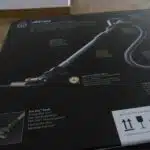
![How To Get Hair Out Of A Bathtub Drain 4 2/365 [Bathtub Drain]](https://green-life.blog/wp-content/uploads/2023/05/cOEu5edpkejq-150x150.jpg.webp)
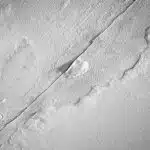



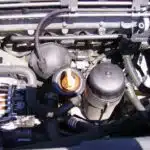


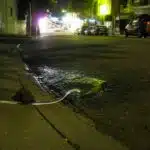

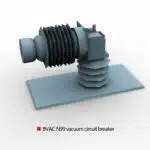
![How To Replace A Bathtub Drain In A Mobile Home 15 2/365 [Bathtub Drain]](https://green-life.blog/wp-content/uploads/2023/05/3ft8KAJsNnjq-150x150.jpg.webp)


